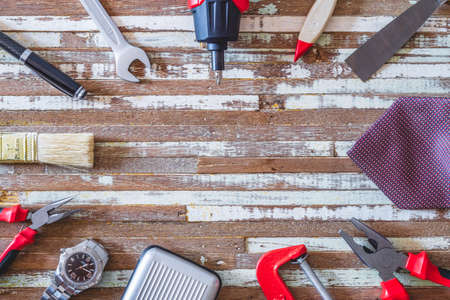Introduction to Green Mortgages in the UK
Green mortgages are rapidly emerging as an appealing financial product for homeowners in the UK who are eager to play their part in building a more sustainable future. In essence, a green mortgage is a type of home loan that rewards borrowers for purchasing energy-efficient properties or making eco-friendly improvements to their existing homes. These incentives might come in the form of lower interest rates, cashback offers, or even enhanced borrowing capacity. As the climate crisis continues to be at the forefront of public consciousness and government policy, more Britons are looking into how their personal choices—especially in relation to housing—can contribute to environmental sustainability.
Within the UK context, lenders have begun to recognise the value of supporting homeowners who want to reduce their carbon footprint. This trend aligns with broader national targets aimed at cutting emissions and achieving net-zero goals by 2050. Whether you’re contemplating buying a new build that meets high energy performance standards or thinking about remortgaging your current property to fund insulation upgrades, green mortgages provide practical financial benefits while helping to protect the planet. It’s little wonder that these products are gaining traction among eco-conscious households across England, Scotland, Wales, and Northern Ireland.
2. Benefits of Remortgaging for Sustainability
Remortgaging with a green mortgage in the UK offers a range of financial and environmental benefits that make it an attractive option for homeowners keen on sustainability. Not only can you secure a more favourable interest rate, but you may also unlock additional savings on your energy bills by making eco-friendly home improvements.
Financial Advantages of Green Mortgages
Many UK lenders now offer green mortgages with incentives such as reduced interest rates or cashback when borrowers use the funds to upgrade their property’s energy efficiency. By remortgaging to a greener product, homeowners can potentially lower their monthly repayments, reduce overall borrowing costs, and benefit from enhanced property value due to improved EPC (Energy Performance Certificate) ratings.
| Green Mortgage Incentive | Typical Benefit |
|---|---|
| Lower Interest Rate | 0.1%–0.5% reduction compared to standard products |
| Cashback Offers | £250–£500 for qualifying home improvements |
| No Product Fee | Savings on upfront costs (usually £995–£1,500) |
Environmental Impact and Energy Savings
One of the key drivers for choosing a green remortgage is the potential to make significant environmental improvements at home. Upgrading insulation, fitting double glazing, or installing solar panels can reduce your carbon footprint while slashing utility bills. According to the Energy Saving Trust, improving your EPC rating from D to B could save an average UK household up to £400 per year on energy bills.
Summary of Environmental & Financial Benefits
- Reduced monthly mortgage payments: Thanks to preferential rates and lender incentives.
- Lower energy costs: Through improved insulation and efficient heating systems.
- Increased property value: Homes with higher EPC ratings are more attractive to future buyers.
- Shrinking carbon footprint: Contributing to the UK’s net zero goals.
Is Remortgaging for Sustainability Right for You?
If you’re planning major eco-friendly upgrades or simply want to cut household expenses, switching to a green mortgage could be the practical step towards a more sustainable lifestyle—and a healthier bank balance.
![]()
3. Popular Eco-Friendly Home Improvements
When considering a green mortgage or remortgaging for sustainability, many UK homeowners look to eco-friendly home improvements that not only reduce their carbon footprint but also help save on household bills. Some upgrades have become especially popular across the country due to their effectiveness and relatively straightforward installation process.
Loft Insulation
Adding or improving loft insulation is often the first step for many British households. As heat rises, a significant amount can escape through an uninsulated roof. Upgrading your loft insulation can keep your home warmer in winter and cooler in summer, leading to lower energy consumption and reduced heating costs. This simple improvement is widely encouraged by energy advisers and is often included as a qualifying upgrade for green mortgage products.
Double Glazing
Double glazing is another favourite among UK homeowners aiming to boost energy efficiency. Replacing old single-glazed windows with double-glazed units reduces heat loss, cuts down draughts, and helps keep outside noise at bay—an especially welcome benefit in busy towns and cities. Not only does this make your home more comfortable, but it can also add value when it comes time to sell.
Solar Panels
The sight of solar panels on rooftops is becoming increasingly common across Britain. Solar photovoltaic (PV) systems allow you to generate your own renewable electricity, reducing reliance on the National Grid and helping to cut both emissions and bills. With various government incentives previously available—and potential future schemes in the pipeline—solar panels remain a top choice for those wanting to make a long-term investment in sustainability.
Energy-Efficient Heating Systems
Heating makes up a substantial portion of most UK homes’ energy use, so upgrading to an energy-efficient boiler or installing a modern heat pump can make a big difference. Air source heat pumps are growing in popularity, especially as part of government initiatives like the Boiler Upgrade Scheme. Smart thermostats and modern radiators can further optimise your heating system, ensuring you’re only using what you need and helping you stay on top of rising energy prices.
Everyday Changes Add Up
Even smaller upgrades—like draught-proofing doors, switching to LED lighting, or investing in water-saving devices—are part of the wider shift towards greener living. These improvements might seem modest individually, but together they help create more sustainable homes that are cheaper to run—a win-win situation for both your wallet and the planet.
Government Schemes and Incentives
Making your home more eco-friendly can seem expensive at first glance, but the UK government offers a range of schemes and grants to help homeowners make sustainable upgrades. Whether you’re considering remortgaging for a green mortgage or simply want to boost your property’s energy efficiency, tapping into these incentives can reduce upfront costs and speed up your return on investment.
Overview of Key Government Initiatives
Here’s a quick look at some of the most relevant schemes currently available for UK homeowners:
| Scheme | Who Is It For? | What Does It Cover? | Potential Savings/Support |
|---|---|---|---|
| Energy Company Obligation (ECO4) | Low-income & vulnerable households | Insulation, heating upgrades, renewable energy installations | Up to 100% of improvement costs |
| Great British Insulation Scheme (GBIS) | Homeowners and private renters in council tax bands A-D (England) | Cavity wall, loft, and solid wall insulation | Substantial grant funding for eligible properties |
| Boiler Upgrade Scheme (BUS) | Homeowners in England & Wales replacing fossil fuel heating | Air source & ground source heat pumps, biomass boilers | £5,000–£6,000 grants per household |
| Smart Export Guarantee (SEG) | Homeowners generating renewable electricity (e.g., solar panels) | Exporting surplus energy back to the grid | Pays you for every kWh exported |
| VAT Relief on Energy-Saving Materials | All homeowners installing qualifying measures | Solar panels, heat pumps, insulation, etc. | 0% VAT until March 2027 (was 5%) |
Tapping Into Local Support and Advice
Apart from national grants, many local councils across the UK offer their own support schemes or top-up funding for green home improvements. It’s worth checking with your local authority or using government-approved advice services like the Simple Energy Advice website to find what’s available in your area.
The Bottom Line: Make the Most of Free Money!
If you’re thinking about remortgaging to fund eco-friendly upgrades, combining a green mortgage deal with government incentives is a smart way to save money now and reduce your bills in the long run. Don’t miss out on free cash—do your research and get the support you’re entitled to before starting any major work.
5. How to Qualify for a Green Mortgage
Securing a green mortgage in the UK means meeting specific criteria set by lenders, all geared towards promoting energy-efficient living and sustainability. If youre considering remortgaging to fund eco-friendly home improvements, understanding these requirements is key to unlocking better rates and incentives.
Minimum Energy Efficiency Ratings
The cornerstone for most green mortgages is your propertys Energy Performance Certificate (EPC) rating. Typically, lenders require your home to achieve at least a band B or C on the EPC scale. Some providers may accept properties with an EPC rating of C or above, but the best deals often go to those reaching band B. It’s essential to check your homes current rating—if it falls short, investing in upgrades like better insulation, double glazing, or an efficient boiler can help you qualify.
Proof of Sustainable Improvements
Lenders may ask for documentation showing that any recent improvements are genuinely eco-friendly. Receipts, invoices from certified installers, and updated EPC assessments are commonly required. If you’re using the remortgage funds specifically for green upgrades, lenders might request a plan detailing how the money will be spent and what improvements will be made.
Additional Lending Criteria
Aside from energy efficiency, standard mortgage eligibility checks still apply—think income verification, credit checks, and loan-to-value (LTV) assessments. However, because green mortgages are designed to encourage sustainable living, some lenders offer slightly higher LTVs or reduced interest rates as an added incentive.
Staying Eligible: Ongoing Requirements
It’s not just about qualifying at the outset; maintaining your property’s energy performance can be important too. Some lenders may reserve the right to re-assess your home’s EPC rating during the mortgage term, especially if you’re benefiting from special incentives. Staying proactive with maintenance and further improvements can ensure you continue to enjoy the perks of your green mortgage.
By meeting these criteria and providing clear evidence of your homes efficiency, you’ll be well-positioned to secure a green mortgage—making sustainability work for both your wallet and the planet.
6. Practical Tips: Remortgaging and Upgrading Sustainably
If you’re thinking about remortgaging to fund eco-friendly home improvements, it pays to be savvy with your choices and your budget. Here’s how to approach green upgrades in a way that fits into everyday life, keeps costs manageable, and makes the most of what UK lenders and government schemes offer.
Assess Your Current Mortgage and Home
Start by reviewing your current mortgage deal—are you coming to the end of a fixed-rate period or facing higher repayments? Use this as an opportunity to shop around for green mortgages that could offer lower rates or cashback incentives for energy-efficient upgrades. Don’t forget to check your home’s EPC (Energy Performance Certificate) rating; many lenders require a certain rating to qualify for their green products.
Set a Realistic Budget
Eco-friendly improvements can range from draught-proofing windows to installing solar panels. Set a clear budget before you start. List potential projects by priority—perhaps begin with low-cost, high-impact changes like loft insulation or upgrading to LED lighting. Compare quotes from local tradespeople, but also look at DIY options where practical (and safe). Remember to factor in any upfront costs versus long-term savings on energy bills.
Tap Into Grants and Incentives
The UK government and some local councils offer grants or financial incentives for certain green home improvements—think boiler upgrade schemes, heat pump grants, or discounted insulation. Check what’s available in your area on official websites like GOV.UK or through the Energy Saving Trust. These schemes can significantly reduce out-of-pocket expenses when combined with remortgaging funds.
Plan Improvements Around Your Lifestyle
You don’t have to do everything at once. Consider spreading out upgrades over time so you can budget more easily and take advantage of seasonal sales on materials. For example, fitting draught excluders in winter or shopping for discounted insulation in the summer can save money. Keep an eye on second-hand marketplaces for items like radiators or double-glazed windows.
Monitor Progress and Savings
After making changes, track your energy bills and keep receipts for all works done—these might help if you need to prove eligibility for future green mortgage deals or want to increase your home’s value when selling. Many banks also offer apps to monitor your spending and set savings goals; use them to stay on top of repayments and future projects.
The Bottom Line
Remortgaging for sustainability is not just about big gestures—it’s about making small, smart decisions that add up over time. With careful planning, research into incentives, and a bit of day-to-day budgeting know-how, you can make meaningful eco-upgrades without breaking the bank while enjoying a cosier, greener British home.


